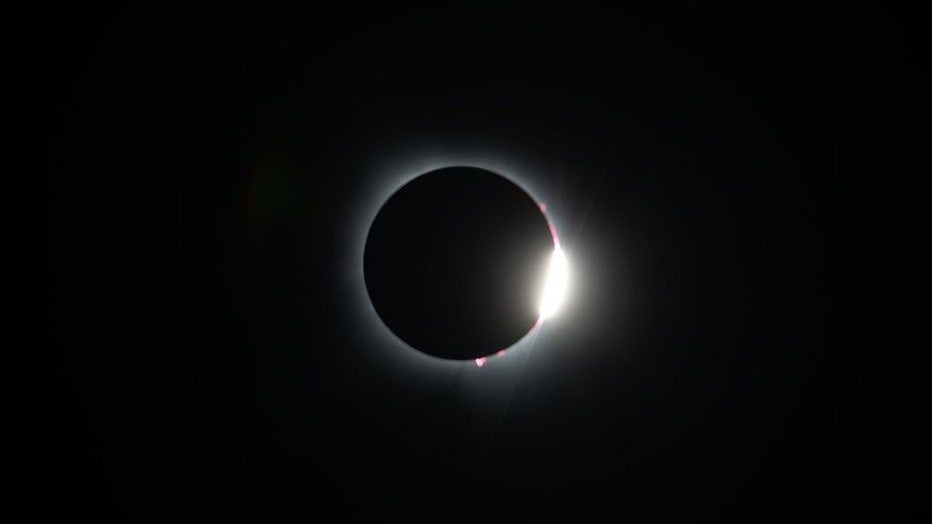Astronauts get eerie view of Moon’s shadow as it trudges across Earth during solar eclipse

Solar eclipse: Nearing totality in Mexico
This is what the sun looked like in Mexico moments before the moon completely blocks the sun during the total solar eclipse.
Astronauts on the International Space Station had an eerie view during the total solar eclipse on Monday as the Moon's shadow raced across the planet's surface.
Waiting for totality on Earth took more than an hour after the partial eclipse began, but the low-Earth orbit's view provided context for how fast the Moon's shadow is moving. According to NASA, the eclipse shadow travels at 1,100 mph at the equator and up to 5,000 mph near the poles.
AMERICA’S TOTAL SOLAR ECLIPSE DAZZLES COUNTRY AS MILLIONS SCRAMBLE TO FIND BEST VIEW

FILE - A total solar eclipse is pictured in Plano, Texas, the United States, on April 8, 2024. ( Dan Tian/Xinhua via Getty Image)
The astronauts living and working on the ISS orbit the Earth about every 90 minutes, witnessing 16 sunrises and sunsets in 24 hours and up to five eclipses a year.
On Monday, the astronauts could not only see the eclipse as the Moon blocked the face of the Sun, but the Moon's shadow down on Earth as it blocked the sunlight over the path of totality – looking like a floating black hole on Earth down below.
The ISS wasn't the only view of the solar eclipse from space. SpaceX founder Elon Musk shared the video below, which was taken by a Starlink satellite in low-Earth orbit.
MISS THE APRIL 8TH TOTAL SOLAR ECLIPSE? HERE’S A LIST OF FUTURE CELESTIAL EVENTS
The video shows the Moon's umbra or shadow as it moves across the planet.
While the Moon was moving in front of the Sun's face, solar and Earth-observing spacecraft recorded the eclipse in real time.
NOAA's GOES-East satellite tracked the Moon's shadow moving across the Pacific Ocean and North America while the European Space Agency's Proba-2 satellite recorded the eclipse looking toward the Sun.

Neat NASA visualization shows eclipse path
A cool new animated graphic from NASA shows exactly how the eclipse will travel across the US.

